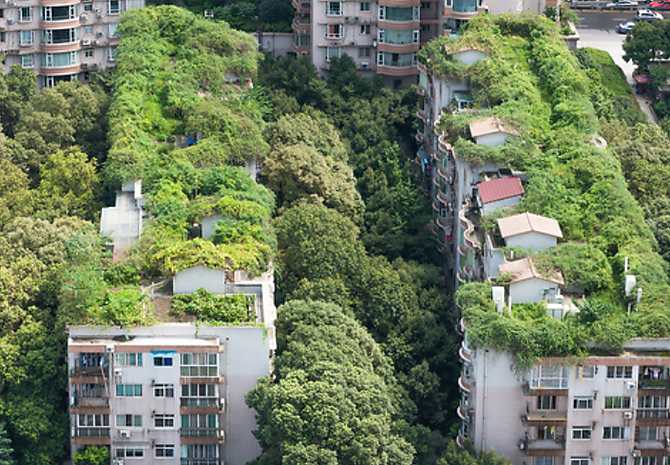Cataloging a "green" building or infrastructure does not mean that it is painted with that color, means that its concept, responds to the parameters of an eco-efficient construction.
The architect Pedro Torrijos, in an article published in the ElEconomista.com news portal, explains that sustainable architecture reduces energy expenditure, but not only with the final product, also during all the processes involved in concrete construction: the choice of the materials, the transport used for the building materials transportations and the energetic maintenance of the building.
Torrijos warns that, however, the goal of zero CO2 emissions is still practically impossible to achieve because for this it is necessary to standardize and modify the processes involved. He cites an example in his article: "While the excavators that extract the materials, the trucks that take them to the work and the cranes that place them in their corresponding place continue to have a great diesel engines, the polluting emissions will never disappear completely ".
Progress in subject:
The specialist, however, remains optimistic. He emphasizes that in recent years in Spain there has been an advance in the commitment to reduce energy consumption in residential buildings. He describes the existence of a so-called "passive architecture" where the infrastructure allocates most of its energy and water performance to systems that were included in the basic design of the construction and are easy to care for. Some of these systems involve investing in thermal insulation, tools to take advantage of sunlight and devices to make optimal and appropriate use of water, among others.
An incentive for this type of construction is the "Passivhaus" seal, a standard created by engineers Wolfgang Feist and Bo Adamson that is granted to residences that reduce their energy consumption to a minimum or less than 10% of what they would consume traditional building.
To achieve this recognition, buildings must focus on tasks such as increasing and improving the insulation system on the building façade and glass, eliminating thermal bridges or installing water saving and reuse systems. Previously, it will be necessary to study the orientations of the living spaces according to the climatic characteristics of the locality where the building will be raised, since this will allow to optimize the thermal saving devices. "It's not just about putting more layers of insulation, but choosing correctly how many layers are needed and where to put them," says Torrijos.
Sustainability can have a high cost, at least more than the work to be done in a conventional infrastructure, so it is logical that there are only 15,000 homes with the Passivhaus seal on the planet; 140 of them are located in Spain. However, Torrijos insists that, although the value of the work will be high, the savings in maintenance will undoubtedly offset the investment. Ensures that if a home can spend 1,000 euros per year on heating and air conditioning, it would require only 100 euros and considering that the half-life of a building is 50 years, calculate well you will be right.
Review:
The architect clarifies another myth: an ecological building may not have any vegetation. It states that a green building can have any shape and occupy any space. He also adds that one option that lowers costs is the use of greener materials and closer to the construction area. Torrijos called not to be influenced by everything that is said on the internet on the subject, in fact, explicitly criticized the definition of "bioconstruction" contained in the Wikipedia platform.
He denies that an eco-efficient construction evokes "the presence of the four elements of nature" such as earth, water, air and fire or that the bioconstruction does not combine with rigid materials, rectilinear designs or corners and angular corners. "No, to see, that is not ecological architecture or sustainable and respectful of the environment, that is the house of the hobbits in The Lord of the rings if Frodo Bolsón had added abundant psychotropic products to tobacco pipes that smokes" , he said.
He believes that green architecture should not be a kind of publicity stunt of countries to pose as sustainable or a trend in design trends, it is necessary to understand their importance for the future and conservation of the environment.

